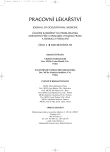Bird Flu
Authors:
P. Husa
Authors‘ workplace:
Klinika infekčních chorob Lékařské fakulty Masarykovy univerzity a Fakultní nemocnice Brno, přednosta doc. MUDr. Petr Husa, CSc.
Published in:
Pracov. Lék., 58, 2006, No. 2, s. 75-77.
Category:
Review article
Overview
The bird flu is an infectious disease of birds caused by an influenza type A virus. For the present, all epidemics of the disease described among birds were caused by highly pathogenic forms of H₅ and H₇ subtypes. Current pandemic of bird flu is caused by a highly pathogenic H₅N₁ subtype, which already migrates among wild birds and is transferred quickly by their migration into very remote areas. Water birds form an infection reservoir from which the infection may be spread on poultry, mammals and very rarely on man. All influenza viruses are highly specific for species and therefore the infection transmission on other animal species is relatively rare and mostly under abnormal conditions. Unambiguously, the most suitable conditions for interspecies transmission of an influenza A virus are in some areas of South Eastern Asia. The first cases of an H₅N₁ virus transmission from chickens to the man were described in Hongkong in 1997. An inter-human transmission of the infection has not been unambiguously proved yet.
Key words:
bird flu, influenza A virus, H₅N₁ subtype, pandemic
Labels
Hygiene and epidemiology Hyperbaric medicine Occupational medicineArticle was published in
Occupational Medicine

2006 Issue 2
Most read in this issue
- Spirometry in Clinical Practice
- A Nasal Provocation Test in Occupational Medicine: Recommended Procedure – Methods
- Bird Flu
- Problems Related to the Assessment of Dynamics of Development of Pneumoconioses
